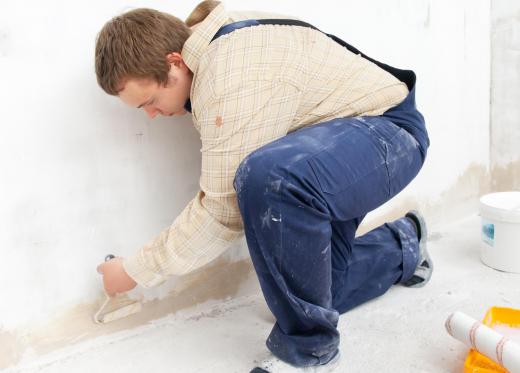A drywall hammer is a special type of hammer that is used in the installation or removal of drywall, which is a material used to finish interior walls. A drywall hammer differs from a regular hammer not only in what it is designed to do, but also in terms of how it looks. Typically, the front face of this type of hammer is serrated, which makes it good for gripping the heads of nails. It usually has a back portion that is shaped like a hatchet as well, which is used for cutting through the drywall material. In fact, a drywall hammer is sometimes referred to as a drywall axe because of the hatchet part of its construction.
Typically, a drywall hammer, which usually has a squared head, is used to drive special nails through a drywall panel and into the wall framing it will cover. This type of hammer is designed to create a depression when it drives a nail in, so that the head of the nail is below the surface of the wall when the nailing is done. The front face of this type of hammer is typically serrated so the hammer does a more efficient job of hitting and driving the nail into its proper place. Sometimes these hammers are also equipped with magnetic technology that helps to keep the nail in the right position.

The purpose of the axe part of the drywall hammer is to cut openings in the drywall for things like outlets. The type of cutting the axe does is often referred to as rough cutting. In many cases, the axe is also useful for pulling nails out. For example, an individual may use the axe to pull improperly positioned nails out, so they can be driven in again.
There are some things a person may do well to consider as he prepares to buy a drywall hammer. First, they come in different weights, and choosing the right weight may influence the accuracy with which a person is able to drive nails. Likewise, there are some drywall hammers that are said to help in decreasing recoil shock, but those that have this ability may be more expensive than lower-quality hammers. Additionally, it is even possible to purchase drywall hammers that are good for driving nails in areas that would normally make nailing difficult or at least more awkward than usual.

